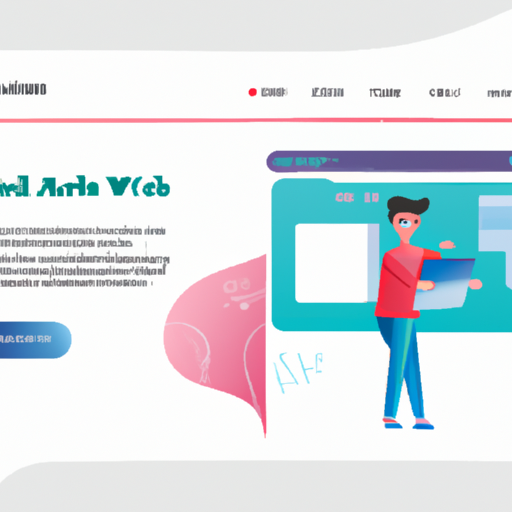-
Table of Contents
- Introduction
- Exploring the Benefits of Cross-Platform App Development with React Native and Xamarin
- Comparing React Native and Xamarin for Cross-Platform App Development
- Understanding the Challenges of Cross-Platform App Development with React Native and Xamarin
- Tips for Optimizing Cross-Platform App Development with React Native and Xamarin
- Conclusion
“Unlock the power of cross-platform app development with React Native and Xamarin – one codebase, multiple platforms!”
Introduction
Cross-platform app development is becoming increasingly popular as businesses look to reach a wider audience. By using technologies such as React Native and Xamarin, developers can create apps that can be used on multiple platforms, such as iOS, Android, and Windows. This allows businesses to reach a larger audience and increase their customer base. React Native and Xamarin are two of the most popular cross-platform development frameworks, and they offer a range of features and benefits that make them ideal for creating apps for multiple platforms. In this article, we will discuss the advantages of using React Native and Xamarin for cross-platform app development.
Exploring the Benefits of Cross-Platform App Development with React Native and Xamarin
The world of mobile app development is constantly evolving, and developers are increasingly turning to cross-platform solutions to create apps that can be used on multiple platforms. Two of the most popular cross-platform solutions are React Native and Xamarin. Both of these frameworks offer a range of benefits to developers, including cost savings, faster development times, and access to a larger user base.
React Native is a JavaScript-based framework developed by Facebook. It allows developers to create native apps for both iOS and Android using the same codebase. This makes it easier to develop and maintain apps, as developers don’t have to write separate code for each platform. React Native also offers a range of features, such as hot reloading, which allows developers to quickly make changes to their code without having to restart the app.
Xamarin is a cross-platform development framework created by Microsoft. It allows developers to create native apps for iOS, Android, and Windows using the same codebase. Xamarin also offers a range of features, such as integration with Visual Studio, which makes it easier for developers to debug and test their apps.
Both React Native and Xamarin offer a range of benefits to developers. One of the main advantages of using a cross-platform solution is cost savings. By using the same codebase for multiple platforms, developers can save time and money by not having to write separate code for each platform. Additionally, cross-platform solutions can help developers reach a larger user base, as they can create apps that can be used on multiple platforms.
Finally, cross-platform solutions can help developers reduce development times. By using the same codebase for multiple platforms, developers can quickly make changes to their apps without having to rewrite code for each platform. This can help developers get their apps to market faster.
In conclusion, React Native and Xamarin are two of the most popular cross-platform solutions for mobile app development. Both of these frameworks offer a range of benefits to developers, including cost savings, faster development times, and access to a larger user base. For these reasons, cross-platform solutions are becoming increasingly popular among developers.
Comparing React Native and Xamarin for Cross-Platform App Development
Cross-platform app development is becoming increasingly popular as businesses look to reach a wider audience and reduce development costs. Two of the most popular frameworks for cross-platform app development are React Native and Xamarin. Both frameworks offer a range of advantages and disadvantages, and it is important to understand the differences between them in order to make an informed decision about which framework is best for your project.
React Native is an open-source framework developed by Facebook. It is based on JavaScript and uses the same design as React, allowing developers to create native apps for both iOS and Android. React Native is a popular choice for developers due to its flexibility and ease of use. It also allows developers to reuse code, which can save time and money.
Xamarin is a cross-platform development framework developed by Microsoft. It is based on the C# programming language and allows developers to create native apps for both iOS and Android. Xamarin is a popular choice for developers due to its robustness and scalability. It also allows developers to share code across platforms, which can save time and money.
When comparing React Native and Xamarin, it is important to consider the advantages and disadvantages of each framework. React Native is a great choice for developers who are looking for a fast and easy way to create cross-platform apps. It is also a great choice for developers who are familiar with JavaScript. However, React Native does not offer the same level of scalability and robustness as Xamarin.
Xamarin is a great choice for developers who are looking for a robust and scalable framework. It is also a great choice for developers who are familiar with C#. However, Xamarin does not offer the same level of flexibility and ease of use as React Native.
In conclusion, both React Native and Xamarin are great choices for cross-platform app development. The choice of which framework to use will depend on the specific needs of the project. It is important to consider the advantages and disadvantages of each framework in order to make an informed decision.
Understanding the Challenges of Cross-Platform App Development with React Native and Xamarin
Cross-platform app development is becoming increasingly popular as businesses look to expand their reach and maximize their return on investment. However, there are a number of challenges associated with this type of development, particularly when using React Native and Xamarin. In this article, we will explore the challenges of cross-platform app development with React Native and Xamarin and how to overcome them.
The first challenge of cross-platform app development is the need to maintain two separate codebases. React Native and Xamarin both require developers to maintain two separate codebases, one for Android and one for iOS. This can be time-consuming and costly, as developers must ensure that both codebases are kept up to date and that any changes made to one codebase are reflected in the other.
The second challenge is the need to maintain two separate user interfaces. React Native and Xamarin both require developers to create two separate user interfaces, one for Android and one for iOS. This can be difficult, as developers must ensure that both user interfaces are consistent and that any changes made to one user interface are reflected in the other.
The third challenge is the need to maintain two separate development environments. React Native and Xamarin both require developers to maintain two separate development environments, one for Android and one for iOS. This can be difficult, as developers must ensure that both development environments are up to date and that any changes made to one environment are reflected in the other.
Finally, the fourth challenge is the need to maintain two separate app stores. React Native and Xamarin both require developers to maintain two separate app stores, one for Android and one for iOS. This can be difficult, as developers must ensure that both app stores are up to date and that any changes made to one app store are reflected in the other.
Fortunately, there are a number of strategies that can be employed to overcome these challenges. For example, developers can use a single codebase for both Android and iOS, which can help to reduce the amount of time and money spent on maintaining two separate codebases. Additionally, developers can use a single user interface for both Android and iOS, which can help to ensure that both user interfaces are consistent. Finally, developers can use a single development environment for both Android and iOS, which can help to ensure that both development environments are up to date.
In conclusion, cross-platform app development with React Native and Xamarin can be challenging, but it is possible to overcome these challenges with the right strategies. By using a single codebase, user interface, and development environment, developers can reduce the amount of time and money spent on maintaining two separate codebases, user interfaces, and development environments.
Tips for Optimizing Cross-Platform App Development with React Native and Xamarin
1. Utilize Platform-Specific Features: When developing a cross-platform app, it is important to take advantage of the platform-specific features that each platform offers. For example, React Native and Xamarin both offer access to native APIs, allowing developers to create apps that are tailored to the specific platform.
2. Leverage Code Sharing: Code sharing is a great way to optimize cross-platform app development. By leveraging code sharing, developers can write code once and use it across multiple platforms, reducing development time and cost.
3. Use Cross-Platform Libraries: Cross-platform libraries are a great way to optimize development time and cost. Libraries such as React Native and Xamarin provide access to a wide range of features and functionality, allowing developers to quickly and easily create apps for multiple platforms.
4. Test Across Platforms: Testing is an important part of any development process, and it is especially important when developing cross-platform apps. It is important to test the app across all platforms to ensure that it works as expected.
5. Utilize Automation: Automation is a great way to optimize development time and cost. Automation tools such as Jenkins can be used to automate the build and deployment process, allowing developers to focus on the development of the app.
6. Monitor Performance: Performance is an important factor when developing cross-platform apps. It is important to monitor the performance of the app across all platforms to ensure that it is performing as expected.
7. Leverage Cloud Services: Cloud services such as Amazon Web Services and Microsoft Azure can be used to optimize cross-platform app development. Cloud services provide access to a wide range of features and functionality, allowing developers to quickly and easily create apps for multiple platforms.
Conclusion
Cross-platform app development using technologies such as React Native and Xamarin is a great way to create apps that can be used on multiple platforms. It allows developers to create apps that are more cost-effective and time-efficient, while still providing a great user experience. With the right tools and knowledge, developers can create apps that are both powerful and user-friendly. Cross-platform app development is a great way to reach a wider audience and create a more successful app.




